Calle Toledo is one of the most important streets of the centre of Madrid. However, we must point out that right from the very beginning it became a reference point as it was the entrance into Madrid for merchants, farmers and peasants.
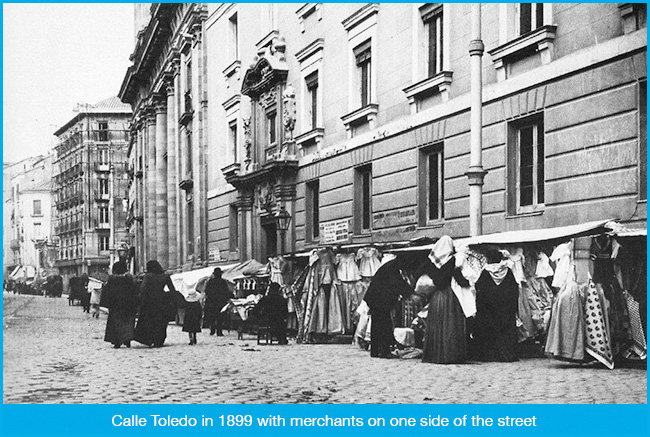
Moreover, it was also the old path to get to the town of Toledo. Calle Toledo is not only a street, it is also the living history of Madrid. In the olden times, Calle Toledo was the point of entry for merchants and farmers who brought their products to sell in Madrid. A few weeks ago, we wrote about Mercado de la Cebada, where we mentioned that some centuries ago this market was a reference point in Madrid. We must stress the fact that Mercado de la Cebada is very much linked to Calle Toledo because the merchants and farmers came to Madrid along Calle Toledo to finally reach Mercado de la Cebada where they sold their products. Today, we will go along Calle Toledo and we will delve into old photographs so as to see what it was like decades ago. We have already visited the old Flea Market, El Rastro. Today, our Walk into the Past will take us along Calle Toledo.
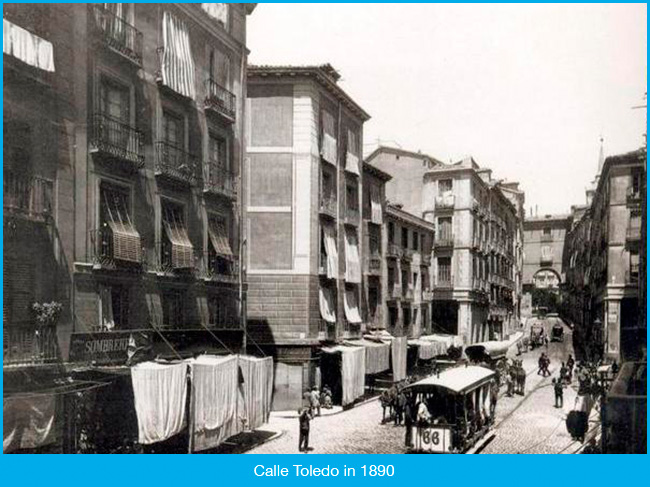
CALLE TOLEDO: A KEY STREET
Calle Toledo starts in Arco de Cofreros in Plaza Mayor and ends in Glorieta de Pirámides. It passes in front of Puerta de Toledo which is an icon of this street as well as of the city of Madrid. In 1815, the book Paseo por Madrid, described this street in great detail.
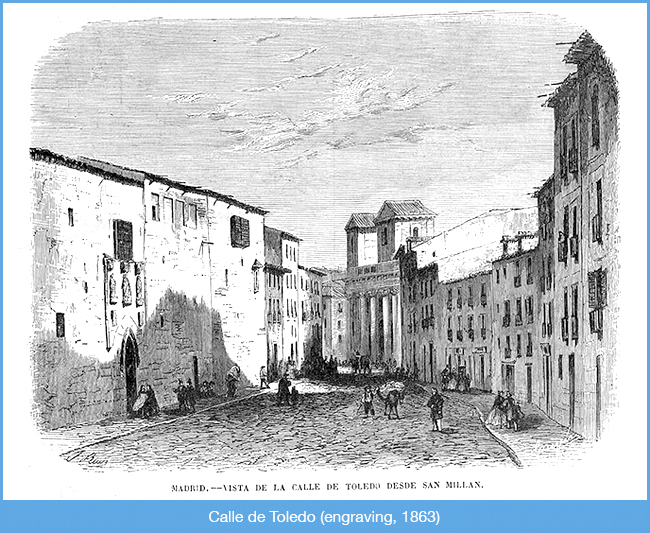
In Calle Toledo and the nearby streets such as Cava Alta and Cava Baja, the great number of taverns and inns attract tourists´attention. These were strategically located so that the merchants who came into Madrid along Calle Toledo would visit them.
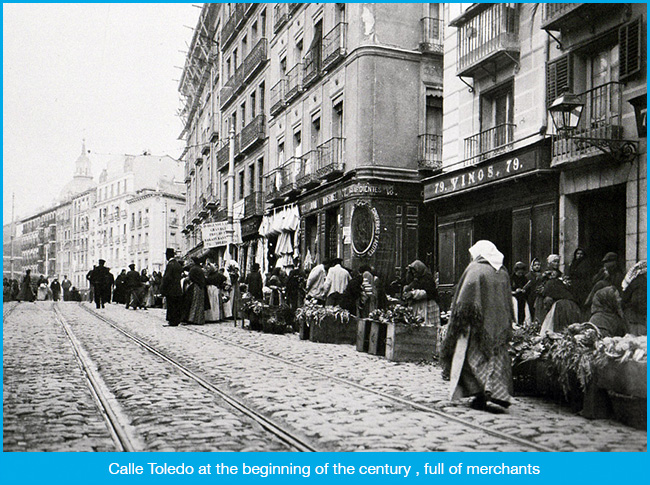
It was a very important street because the main products which were sold in Madrid came in through there.
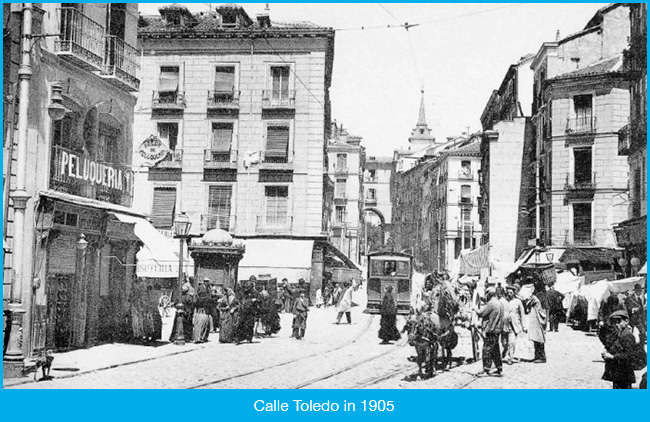
Nowadays, we are still able to see centenary shops which fill us with awe , such as two pharmacies, a shoe shop, a sweet shop and one which sells ropes, strings and cords.
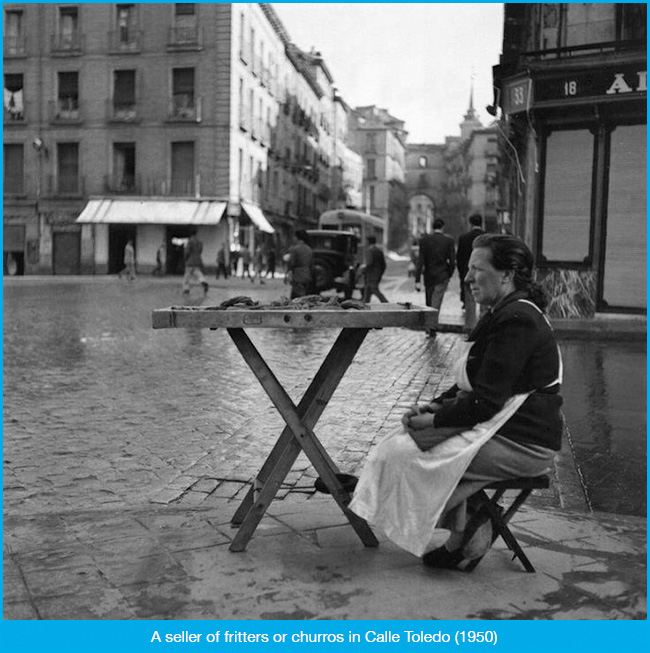
When we look at the old photographs it strikes us that the tram rails and the cobbled pavements have disappeared. As can be seen in these old photographs, the street used to be crowded with merchants who sold their products to passers-by and pedestrians.
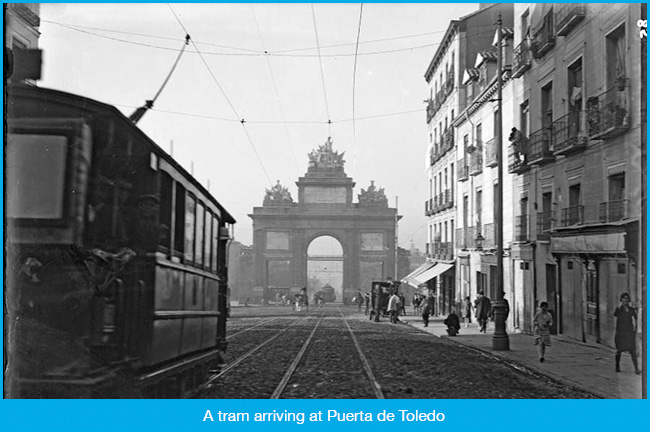
TWO HISTORIC BUILDINGS
Two historic buildings were located in Calle Toledo: in number 33, Real Colegiata de San Isidro (1620), and in number 39, Reales Estudios de San Isidro founded by Felipe IV in 1625. Real Colegiata de San Isidro was the cathedral of Madrid till 1993 when La Almudena became the definite cathedral of the city. Regarding Reales Estudios de San Isidro, we can still see part of its façade and structure. In its place stands Instituto de Enseñanza Secundaria San Isidro.
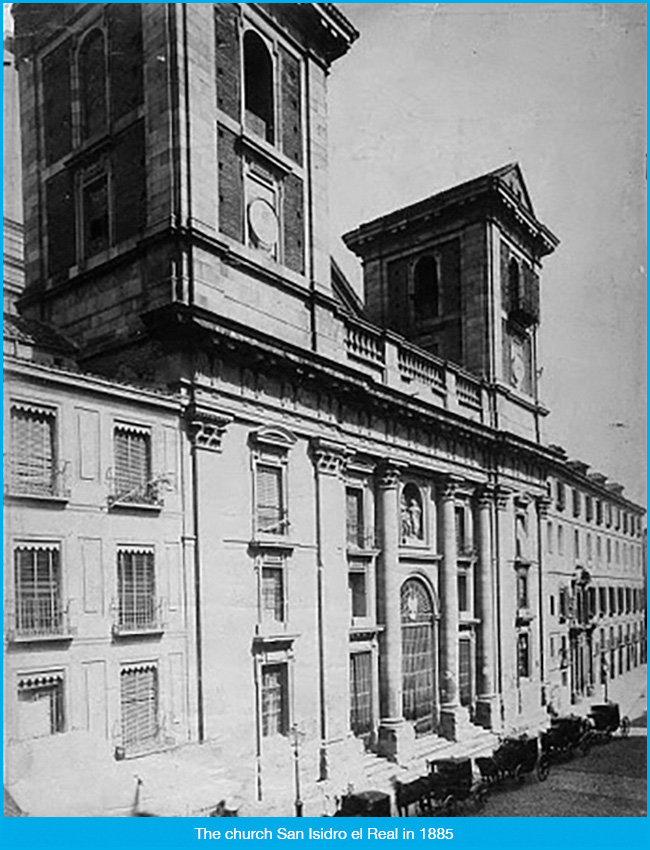
DID YOU KNOW THAT…?
Calle Toledo was not always called so. For a long time it was known as Paseo de los Ocho Hilos due to the beautiful trees that lined it and which had been planted forming eight rows. However, the most curious name it had was Calle de la Mancebía which dates back to the XIV century and whose origin was related to a brothel in the area.
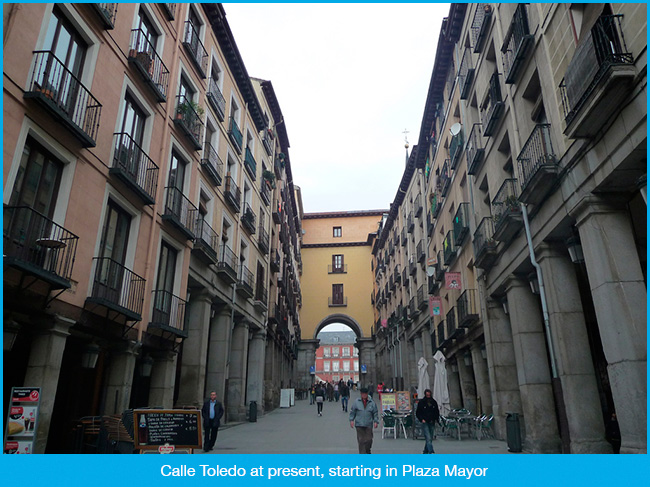
Picture 01: El Museo Universal
Pictures 02, 04 and 05: Madrid Antiguo
Pictures 03 and 06: Secretos de Madrid
Nowadays picture: pegatina1



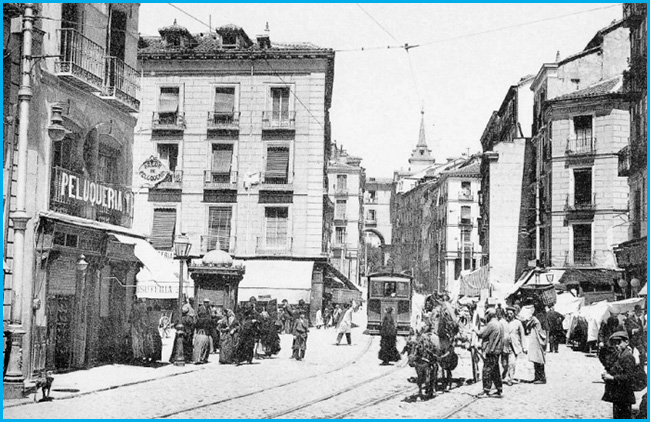
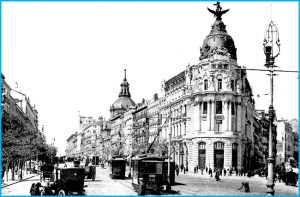
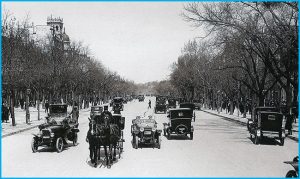
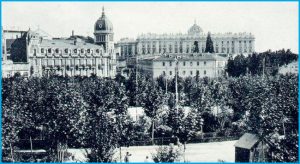
 Spanish
Spanish English
English
Comments
Pingback: Madrid in the past, inconceivable without trams - Blog, dulce blog
Greetings,
For a while now, I have been interested in learning about Calle Toledo, and since my Spanish isn’t as good as my English, my research has been limited to sources in the English language. If you could help me, I’d like to know whether Calle Toledo (the part near the Arco de Cofreros and where the famous banner “¡No pasarán!” was hung in 1936), or anywhere very close by, suffered from bombings during the Civil War.
My second inquiry concerns the exact date the tram and its railways were removed from the street.
Your help would be very appreciated. Thank you in advance.
Author
Hello Fatima! We don´t know if there were bombings in Calle Toledo or a nearby street during the Civil War; it is very possible, since the bombings were constant in the city of Madrid until the war ended. The newspaper El País recently published an article showing a map of Madrid with all the streets that were bombed during the Civil War. You can see the article here (although you will have to translate it, because it is in Spanish).
Regarding your other question, the tram was removed from the streets of Madrid on June 1, 1972. We recommend you to have a look at this article we wrote some time ago in our blog about the trams of Madrid.
Greetings and thanks for reading our blog!
Greetings,
Thank you for your reply but your answer “…the tram was removed from the streets of Madrid on June 1, 1972.” is a little too general. I would be grateful if you could tell me when the tram was removed from Calle Toledo, specifically the part near the Arco de Cofreros and where the famous banner “¡No pasarán!” was hung in 1936.
Regards,
Fatima